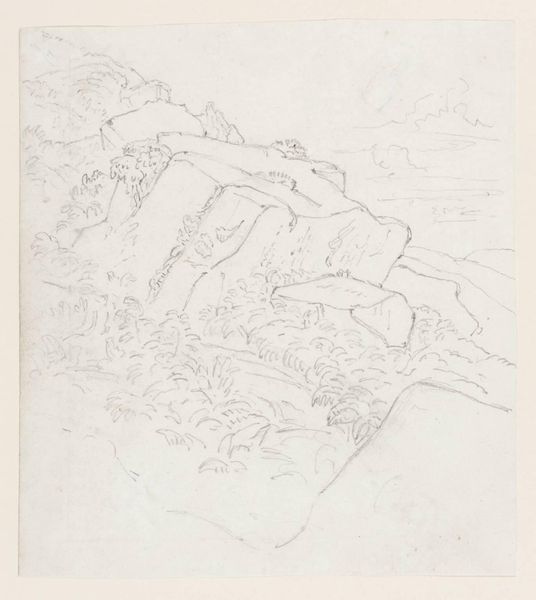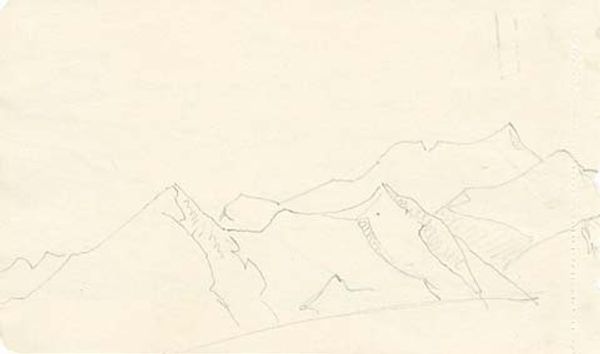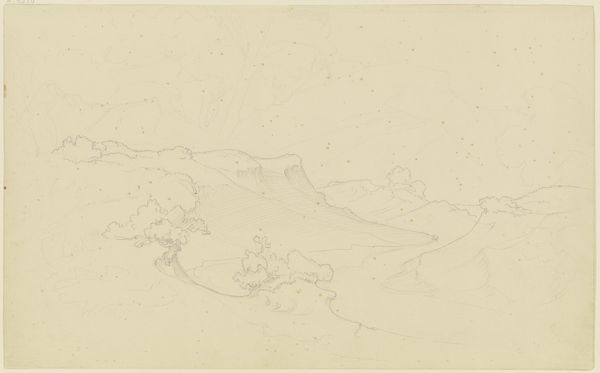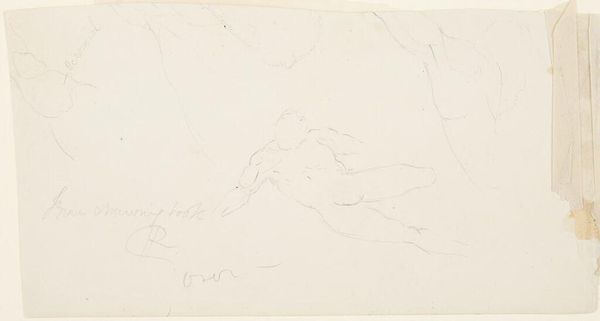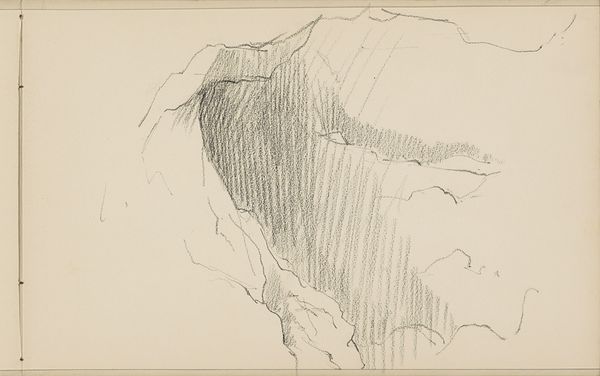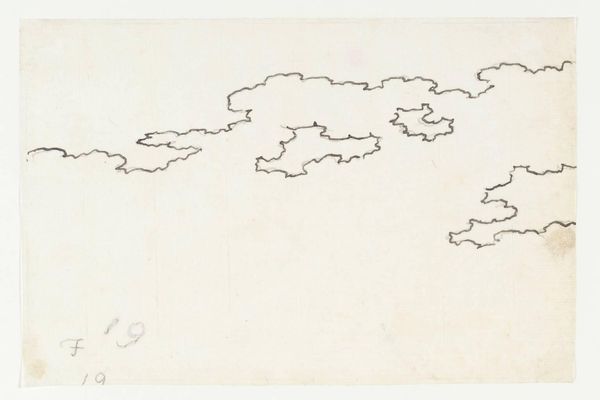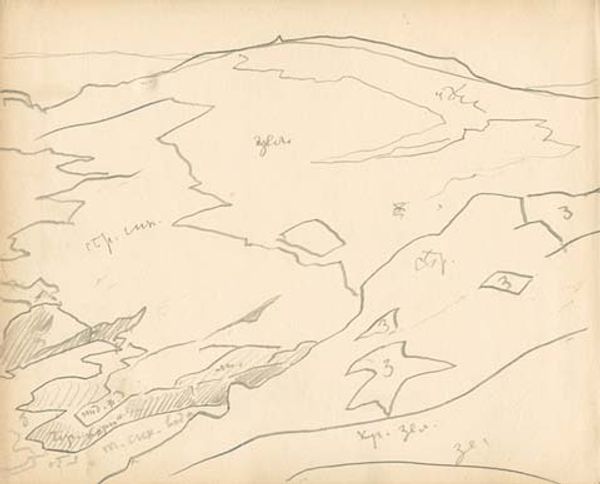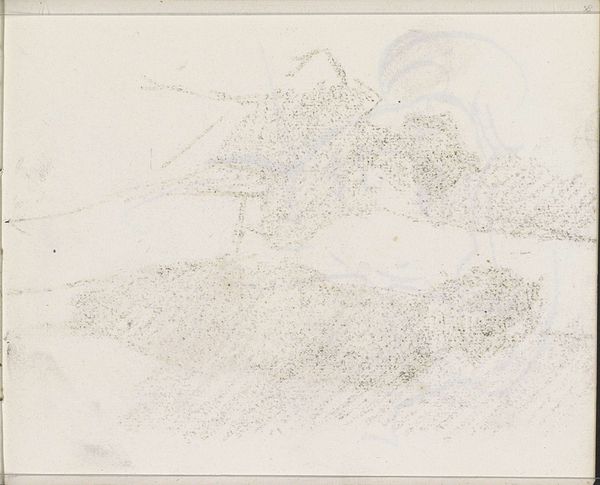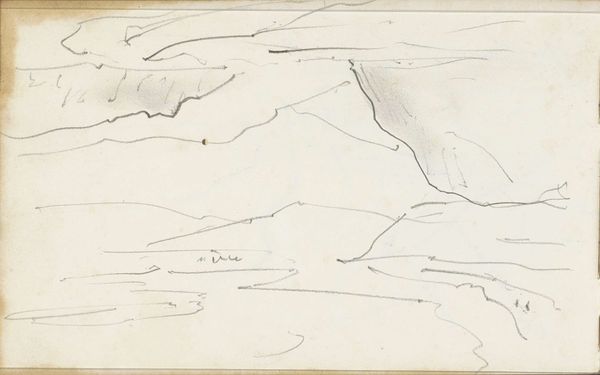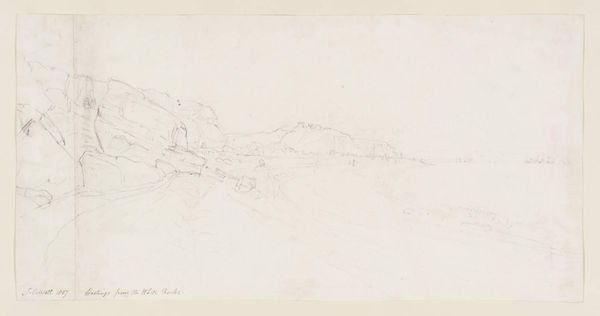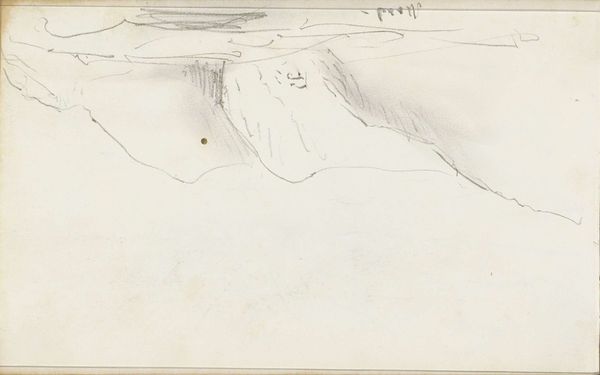
drawing, pencil
#
drawing
#
landscape
#
pencil
#
line
#
realism
Copyright: Public domain
Editor: Here we have Nicholas Roerich's "Monhegan (study)," created in 1922, a delicate pencil drawing on paper. The subtle lines and the almost ghostly quality of the sketch create an ethereal mood. How do you interpret this work? Curator: This work, for me, resonates with Roerich’s larger socio-political concerns. Remember he was deeply engaged with the spiritual dimensions of art and its potential to foster peace and cultural preservation. A seemingly simple landscape drawing then opens up, doesn't it? It's not just about the picturesque; it's about understanding our relationship with the environment. Editor: That’s interesting. So, you’re saying even in what appears to be a straightforward landscape study, there's a deeper message about our connection to nature and perhaps a critique of how we treat it? Curator: Precisely. Consider also Roerich's involvement in movements advocating for the protection of cultural monuments during wartime. The fragility of the drawing itself might be symbolic, speaking to the vulnerability of both the natural world and cultural heritage in the face of conflict and destruction. What do you think about the bareness of the strokes, the drawing style in general? Editor: It emphasizes the impermanence and almost fleeting quality of the subject matter, aligning with the urgency of Roerich's activist sentiments. I hadn’t considered that before. Thanks for pointing that out! Curator: Art is rarely created in a vacuum. Considering the social and political contexts expands our understanding of what artists were trying to communicate and enables us to really think about what role art plays in these larger contexts. Editor: That’s given me a completely different way to consider this drawing and Roerich's overall work.
Comments
No comments
Be the first to comment and join the conversation on the ultimate creative platform.
